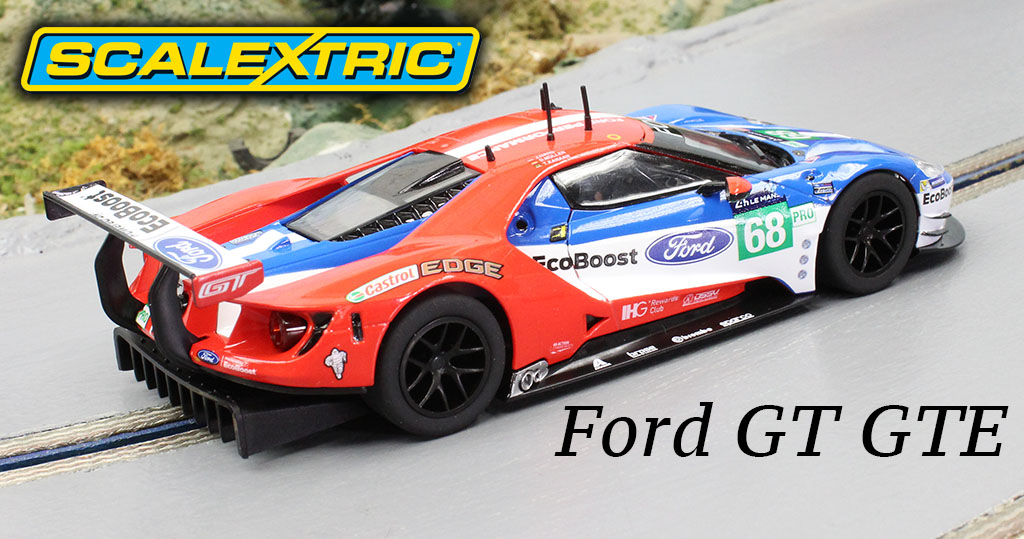The Scalextric version of this now famous Ford has finally arrived. We had a special sneak peek awhile back, but now I can really get closer and spend some much anticipated track time with it.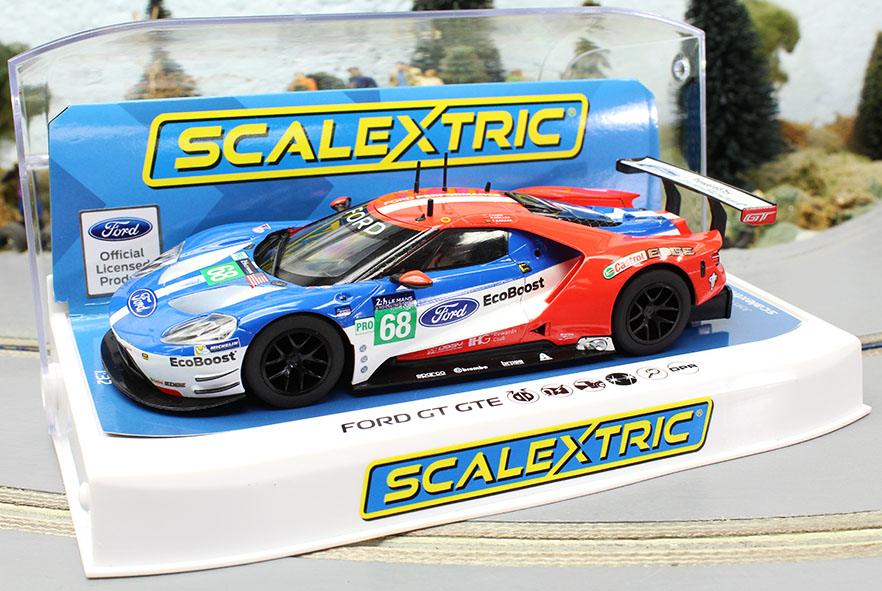
Specifications
Height: 33.55 MM
Length: 154.25 MM
Width: 64.25 MM
Wheelbase: 85 MM
Front/Rear Track: Front: 61.15 MM – Rear 64 MM
Guide Center to Rear Axle Center: 102.35 MM
Guide Blade Depth: 7MM (6.30 From Braid)
Body/Interior Weight: 25 grams
Chassis Weight: 53 grams
Weight Total: 77 grams
Motor: Scalextric “Slimline” Tested: 26,800 @ 12 VDC
Aftermarket Tires:
Silicone Quick Slicks #CB59 Series
Urethane Paul Gage #20125LM
Some have wondered how it compares to the earlier Carrera release. Let’s get this done right away shall we? Because to be honest, with the motor difference along with magnets if you use them, it’s not really a fair view. In magnet form the Carrera just might rule the roost given the dual magnets. And the milder motor might just help keep it in the slot more often for those newcomers.
But for others? Non-magnet? Wood track? Yeah, this Scalextric is clearly the boss of this race.
Weight. This is the big deal for many.
Scalextric: 78g.
Carrera: 108g.
Just on that alone, combined with the quicker slimline motor gives the Scalextric model the advantage. I like the Carrera model very much and with tuning it is just as much fun as this one. But side by side is a different story.
Best Lap Challenge:
Scalextric: 3.815
Carrera: 4.168
Clearly in non-magnet form, Scalextric rules the day. That does not mean it is better for YOU. This is just a match up of the two brands. And as you read below, the Carrera has been modified. The Scalextric, other than tires has not.
A couple things to disclose:
- Both models used Paul Gage tires. Since our Carrera version was tuned using that blend, I used it on the Scalextric as well.
- The Carrera version was tuned with a new guide system. Scalextric is stock.
- No other tuning on the Scalextric other than tire change and appropriate tire sanding/truing.
- The Carrera motor has lower RPM. This is the major factor and why the comparison variance.
Now that we have that out of the way, let’s look at the Scalextric version in depth.


Paint and markings are well done. Clean and crisp and matches the 1:1 very closely.
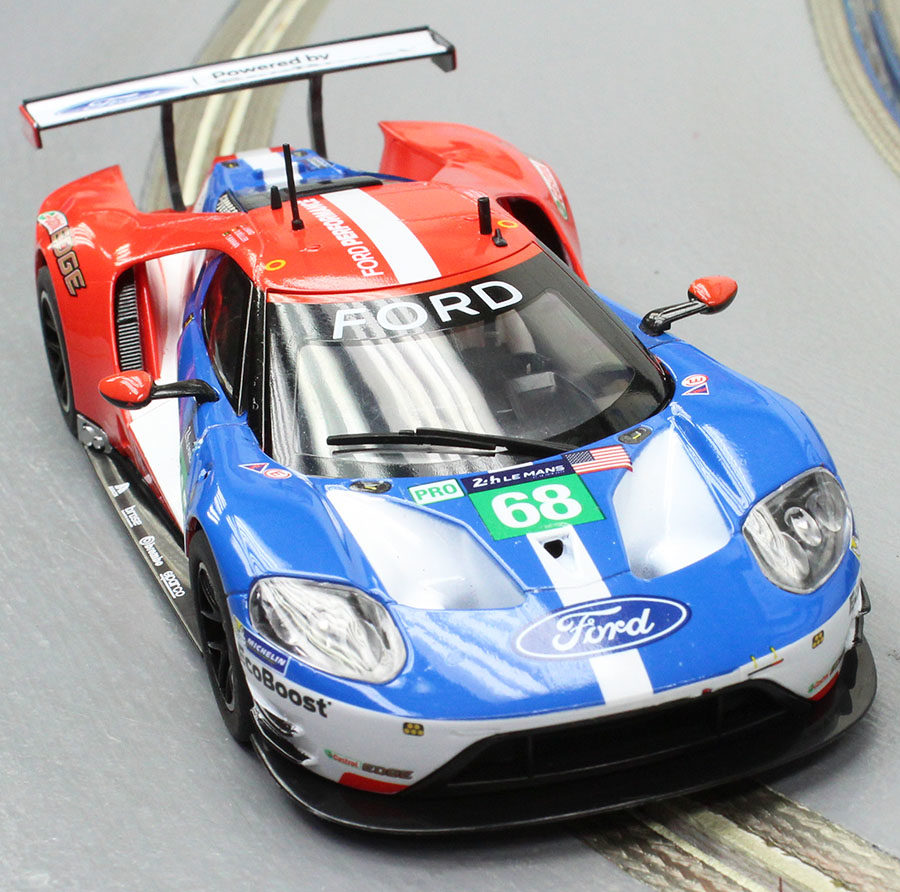
Detail for scale enthusiasts is here. The rear wing will likely be the first victim in hard crashes, but the mirrors are flexible enough to last for quite some time.
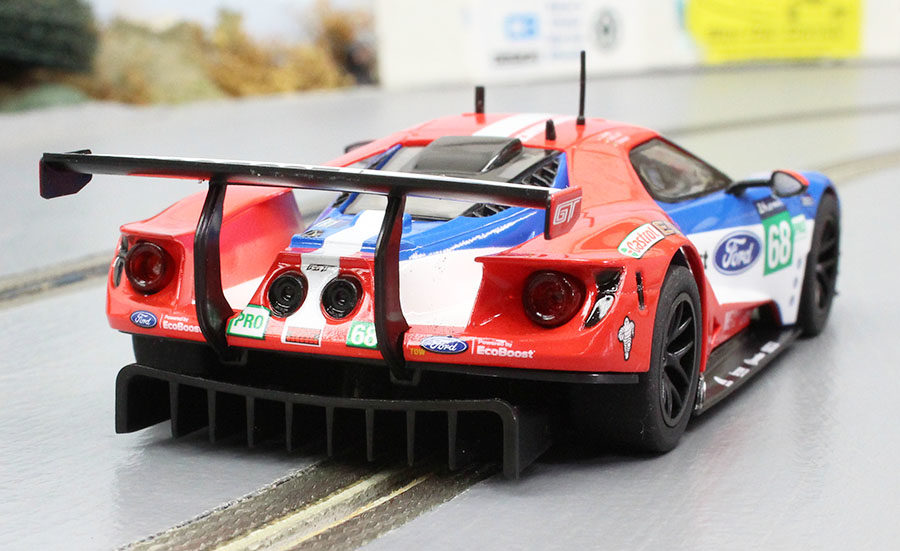
Inside we see the now standard inline for most new models.
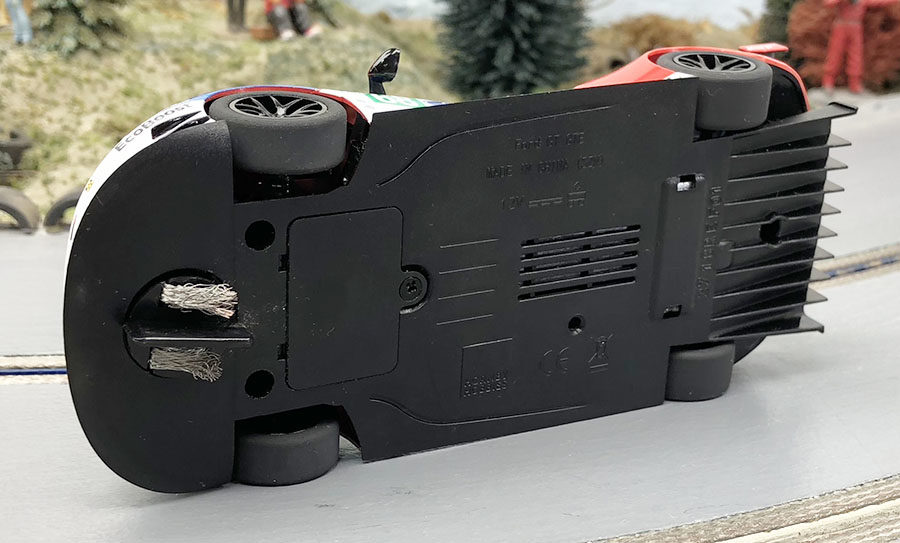

Some enthusiasts are fine with this motor, others are not. It does not matter much to me as I do not have very strict rules for our simple home racing.
But I can understand the issue. The other new inline “GT” cars have the standard motor. Why not this one? The average newcomer will only see they are mismatched when they drop in a new Porsche or Mercedes and see the difference. It might be a good idea to settle on a true standard.
On the other hand, there are equal numbers that do not care either way. Advanced racers will tune it to fit into the series if they really want it. And some want more RPM, so for those that really want it? It is here.
With the new standard wheel size, aftermarket tires are easy to find thanks to Paul Gage and Quick Slicks. Fresh tooling has delivered both silicone and urethane options.
Not that the stock tires are bad. In fact pretty good. See the video.
If you decide to keep the stock tires, you might want to glue them. With just a slight sanding of the wheel for truing, the stock tires are likely to spin on the wheel.

Overall a good release from Scalextric. It looks the part and runs well out of the box as a ready to run model should.
-Harry
Check your favorite Scalextric dealer for availability.
Proudly sponsored by:

